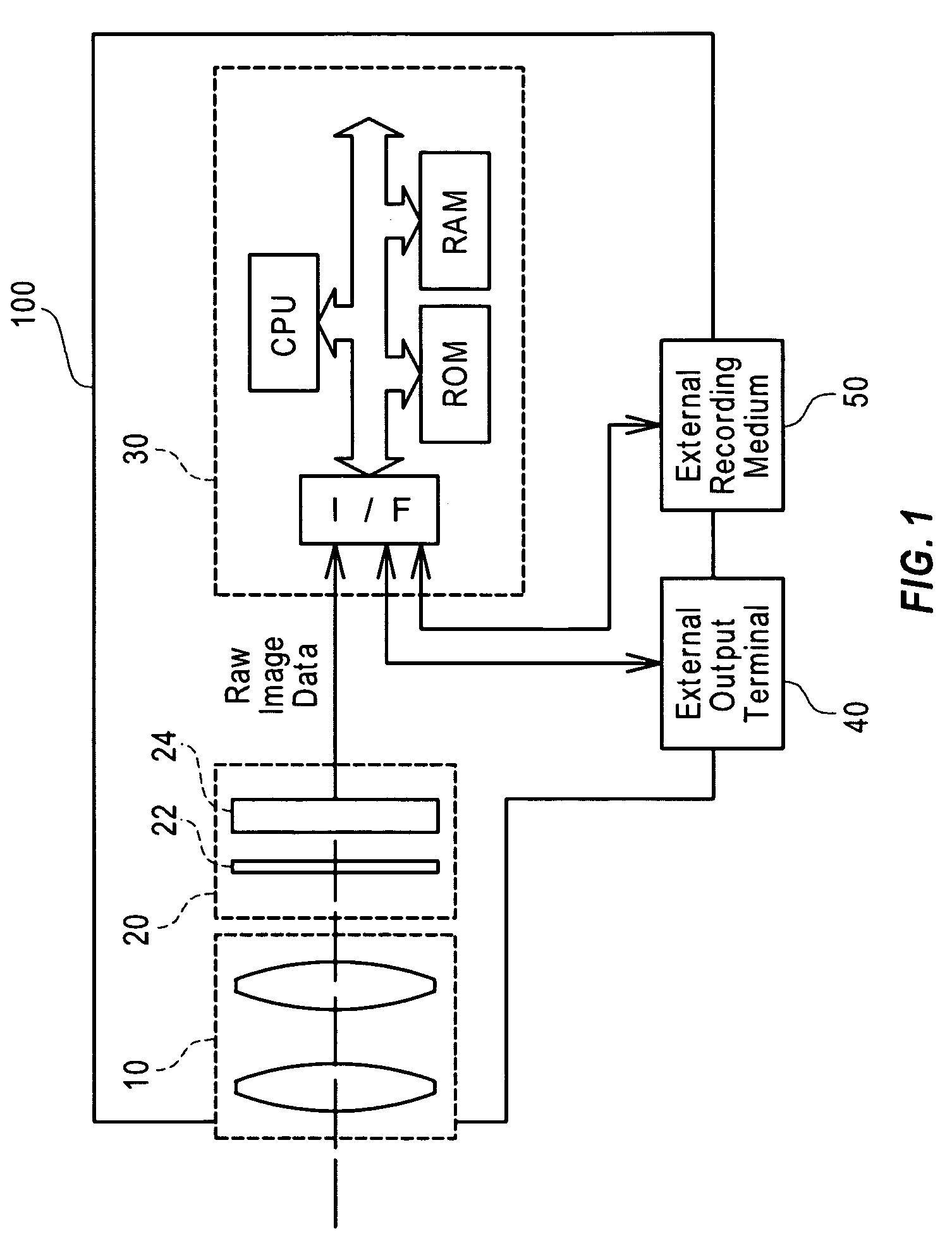Image processing procedure for receiving mosaic image data and calculating vertical and horizontal-direction color difference components for each pixel
a technology of image data and image processing procedure, which is applied in the direction of instruments, television systems, and television system scanning details, etc., can solve the problems of aliasing colors, inability to determine the edge direction of the target pixel immediately as edge noise, and the time for interpolation is consumed, so as to facilitate the high-speed generation of color image data and effectively prevent the occurrence of aliasing colors
- Summary
- Abstract
- Description
- Claims
- Application Information
AI Technical Summary
Benefits of technology
Problems solved by technology
Method used
Image
Examples
modification 1
[0078]H-1. Modification 1
[0079]H-2. Modification 2
modification 3
[0080]H-3. Modification 3
A. System Configuration
[0081]FIG. 1 schematically illustrates the configuration of a digital camera 100 equipped with an image processing apparatus 30 in one embodiment of the invention. As illustrated, the digital camera 100 includes an optical system 10 that has a group of multiple lenses, an imaging assembly 20 that converts an image of a subject formed by the optical system 10 into electric signals, and the image processing apparatus 30 that receives the electric signals from the imaging assembly 20 and makes the received electric signals subjected to a predetermined series of image processing to generate color image data.
[0082]The imaging assembly 20 has an image sensor 24 with a two-dimensional arrangement of multiple fine imaging elements for converting the light intensities into electric signals. A color filter array 22 is provided before the image sensor 24 and has a mosaic arrangement of fine color filters of R (red), G (green), and B (blue). The a...
PUM
 Login to View More
Login to View More Abstract
Description
Claims
Application Information
 Login to View More
Login to View More - R&D
- Intellectual Property
- Life Sciences
- Materials
- Tech Scout
- Unparalleled Data Quality
- Higher Quality Content
- 60% Fewer Hallucinations
Browse by: Latest US Patents, China's latest patents, Technical Efficacy Thesaurus, Application Domain, Technology Topic, Popular Technical Reports.
© 2025 PatSnap. All rights reserved.Legal|Privacy policy|Modern Slavery Act Transparency Statement|Sitemap|About US| Contact US: help@patsnap.com



